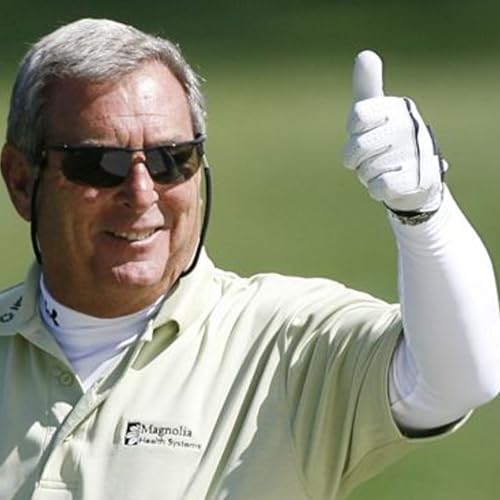(00:01) Indoor Golf Facilities and Game Improvement
This chapter explores the transition from outdoor to indoor golf as the colder months approach, highlighting the growing popularity and benefits of indoor golf facilities. We discuss the advanced technology available at these venues, such as launch monitors and simulators, which provide golfers with detailed feedback on their game, including club head speed and ball flight information. While some facilities offer a more entertainment-focused experience, others provide a hybrid of entertainment and performance enhancement, akin to venues like Topgolf. We emphasize the importance of certain metrics like club head speed in improving one's game, while also noting that not all available data is necessary for every golfer. The chapter highlights how these modern facilities cater to both casual players seeking fun and serious golfers aiming to maintain or improve their skills during the off-season.
(13:42) State-of-the-Art Indoor Golf Facilities
This chapter focuses on the pros and cons of indoor golf facilities, particularly in terms of practicing different aspects of the game like putting and hitting off mats. I explore the advancements in indoor golfing technology, including massive screens and realistic mats that replicate the feel of real grass, and how these can benefit practice sessions. We discuss the limitations, such as the difficulty in perfecting putting indoors, and how high costs reflect the quality of the equipment used. Additionally, we touch on the potential for such facilities in areas like Las Vegas and South Florida, and how they might attract more visitors. The chapter underscores the importance of investing in quality equipment for a realistic golfing experience, even when playing indoors.
(25:50) Visual Golf Training Tools and Techniques
This chapter focuses on the transformative power of simple tools in enhancing skills and understanding in golf. We discuss the potential of showcasing these tools in a video format, emphasizing how visual demonstrations can profoundly impact learning and skill improvement. Highlighting both high-tech and no-tech solutions, we explore how these tools can offer significant benefits, often surprising users with their effectiveness. A particular focus is placed on a magnetic pointer tool that attaches to a golf club face, helping golfers understand club face alignment. By providing a visual representation, this tool aids in improving aim and swing, ultimately enhancing overall performance and understanding of the game. Through seeing and understanding these simple yet effective tools, golfers can achieve greater satisfaction and improvement in their game.
(32:24) Improving Golf Skills Indoors
This chapter explores the benefits of practicing golf indoors, emphasizing the confidence and skill improvement that comes from visualizing and aligning your swing correctly. By using a launch monitor, you can get instant feedback without losing balls, making it easier to practice specific shots repeatedly. We highlight the advantages of using the same golf balls indoors that you would use on the course to maintain consistency in feel and flight. Indoor practice becomes especially valuable during seasons when outdoor play is less comfortable, providing an opportunity to continue improving your game and working towards breaking your personal goals.
(37:32) Indoor Golf Benefits and Fun
This chapter covers a range of topics, beginning with a light-hearted discussion about sports betting on FanDuel, particularly focusing on Indiana University's match against Penn State and the coaching changes affecting both teams. We then shift gears to talk about the world of golf, touching on the dismissal of Auburn University's coach, Hugh Freeze, due to his golfing habits, and exploring the advantages of playing golf indoors with modern technology. We highlight the affordability and convenience of virtual golf experiences, comparing them to the costly adventure of playing iconic courses like Pebble Beach. I share personal experiences from my travels to renowned golf courses, emphasizing the importance of embracing the full experience rather than skimping on such memorable journeys. Throughout the chapter, there's a playful nod to nostalgic pop culture references, adding a touch of humor to the conversation.
Hosted by Simplecast, an AdsWizz company. See pcm.adswizz.com for information about our collection and use of personal data for advertising.
 Dec 21 202542 m
Dec 21 202542 m Dec 14 202548 m
Dec 14 202548 m 45 m
45 m Nov 23 202548 m
Nov 23 202548 m 48 m
48 m Nov 9 202545 m
Nov 9 202545 m Nov 2 202548 m
Nov 2 202548 m Oct 26 202545 m
Oct 26 202545 m
